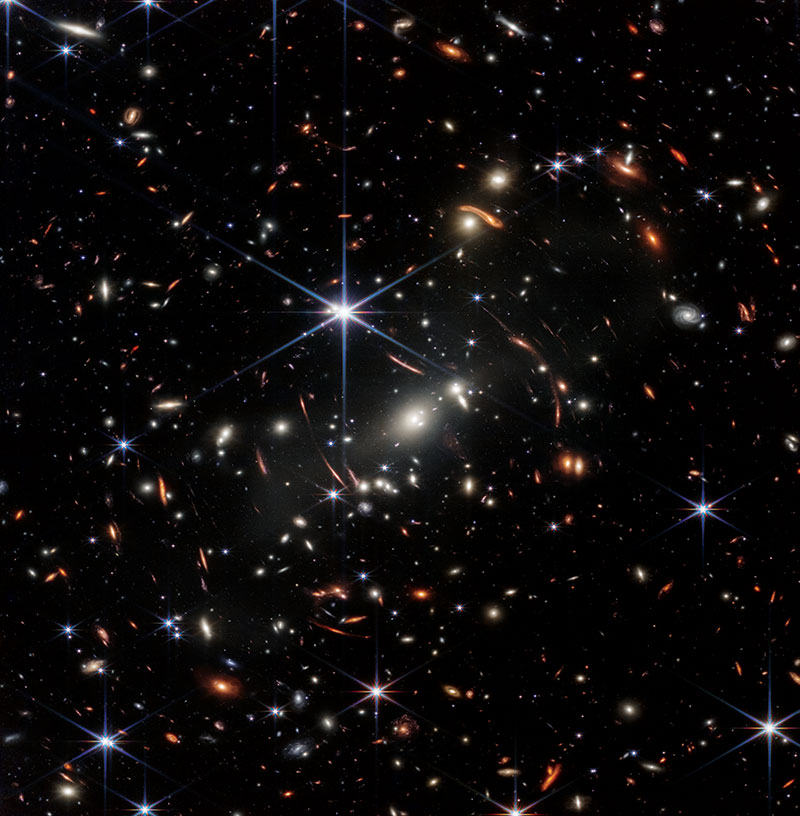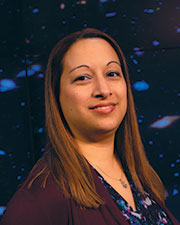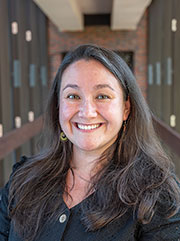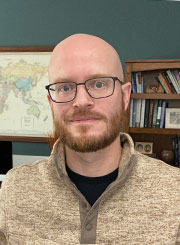Sigma Pi Sigma Members Help Capture and Study JWST Observations
Fall
2022
Society News
Sigma Pi Sigma Members Help Capture and Study JWST Observations
 The world’s most ambitious space telescope, the James Webb Space Telescope (JWST), rocketed into space on December 25, 2021, less than one year ago. But already it’s given us stunning images and a rich source of new data to explore. Here are three of the Sigma Pi Sigma members who’ve had a hand in making it happen.
The world’s most ambitious space telescope, the James Webb Space Telescope (JWST), rocketed into space on December 25, 2021, less than one year ago. But already it’s given us stunning images and a rich source of new data to explore. Here are three of the Sigma Pi Sigma members who’ve had a hand in making it happen.
Knicole Colón
Deputy Project Scientist for Exoplanet Science, NASA’s Goddard Space Flight Center
 My passion for science fiction was a driving factor for me to become an astrophysicist and an expert in the discovery and characterization of exoplanets. I’ve been working at NASA’s Goddard Space Flight Center since 2017. Before that, I worked at NASA’s Ames Research Center on the Kepler mission.
My passion for science fiction was a driving factor for me to become an astrophysicist and an expert in the discovery and characterization of exoplanets. I’ve been working at NASA’s Goddard Space Flight Center since 2017. Before that, I worked at NASA’s Ames Research Center on the Kepler mission.
I also held postdoctoral positions at the University of Hawaiʻi and Lehigh University after earning my PhD from the University of Florida. I became a Sigma Pi Sigma member when I was an undergraduate at The College of New Jersey in 2007. It was the first professional society I ever joined, and it gave me such a feeling of pride!
These days, I’m part of the Transiting Exoplanet Survey Satellite (TESS) mission and the JWST project team. I’ve been part of TESS since shortly after its launch in 2018. My roles on the mission include facilitating communications between different mission partners and supporting the community in obtaining and using TESS data for all types of astrophysics projects. I joined the James Webb Space Telescope project team in 2019. In this role I support ground operations for the collection and analysis of exoplanet observations and also interface with the scientific and public community to present JWST’s exoplanet capabilities.
I also enjoy studying extreme exoplanets—disintegrating planets, super puffy (low-density) planets, and planets on highly eccentric orbits. I want to learn more about how they formed and evolved and why the planets in our solar system are so different!
Kimberly Ward-Duong
Assistant Professor, Department of Astronomy, Smith College
 As a child fascinated by the stars and growing up enchanted by stunning Hubble Space Telescope (HST) images in the 1990s, I had no idea I would someday use space telescopes for my own research. Today, I feel very fortunate to work with some of the first-ever data from JWST, NASA’s flagship successor to the HST, which has exceeded the community’s best expectations in its first few months of operation.
As a child fascinated by the stars and growing up enchanted by stunning Hubble Space Telescope (HST) images in the 1990s, I had no idea I would someday use space telescopes for my own research. Today, I feel very fortunate to work with some of the first-ever data from JWST, NASA’s flagship successor to the HST, which has exceeded the community’s best expectations in its first few months of operation.
As an undergraduate at Northern Arizona University, I knew I wanted to study physics, mathematics, and astronomy, but I was unable to decide which area of physics to pursue. Becoming an enthusiastic member of the Astronomy Club and president of the Society of Physics Students helped kickstart my path into research, which at the time involved using the campus telescope to indirectly search for planets orbiting other stars (exoplanets) and their moons.
After completing an astrophysics PhD at Arizona State University and a postdoc in the Five College Astronomy Department at Amherst College, I began another postdoc fellowship at the Space Telescope Science Institute, headquarters of HST and JWST. My career has come full circle, as my current scientific research also involves searching for exoplanets—now using a method that takes direct images of the planet alongside its star. I am a member of the JWST Telescope Scientist and Early Release Science teams, and my involvement includes simulating realistic datasets, helping devise ways to remove starlight from our images to measure faint planet light, and measuring the atmospheric and orbital properties of distant worlds.
Christopher Stark
Deputy Observatory Project Scientist, NASA’s Goddard Space Flight Center
 I found my calling as an astrophysicist while attending undergraduate physics classes at the University of Northern Iowa. It was there that I first heard about the field of exoplanets and immediately knew what I wanted to do with my life. I went on to study exoplanets and circumstellar disks at NASA Goddard while earning my Ph.D. in Physics from the University of Maryland. After graduating, I spent five years at the Space Telescope Science Institute as part of the Wavefront Team, helping to prepare the alignment of JWST’s hexagonal mirror segments.
I found my calling as an astrophysicist while attending undergraduate physics classes at the University of Northern Iowa. It was there that I first heard about the field of exoplanets and immediately knew what I wanted to do with my life. I went on to study exoplanets and circumstellar disks at NASA Goddard while earning my Ph.D. in Physics from the University of Maryland. After graduating, I spent five years at the Space Telescope Science Institute as part of the Wavefront Team, helping to prepare the alignment of JWST’s hexagonal mirror segments.
In my current role at NASA, I participated in the six-month commissioning phase of JWST to prepare the telescope for science observations. I now track JWST’s performance and its ability to directly image exoplanets, as well as interface with the broader community as the mission goes forward. My research focuses on circumstellar belts of debris generated by asteroids and comets orbiting other nearby stars, and I’m excited to see what JWST will reveal when we image these other planetary systems.
When I’m not working on JWST, I’m helping to define NASA’s future missions that aim to directly image potentially Earth-like planets. I evaluate the exoplanet science yield from future missions to guide and optimize their design and ensure that they can address major scientific questions for decades to come.
Known as Webb’s First Deep Field, this image of galaxy cluster SMACS 0723 is overflowing with detail and includes the faintest objects ever observed in the infrared. Image credit: NASA, ESA, CSA, and STScI.
